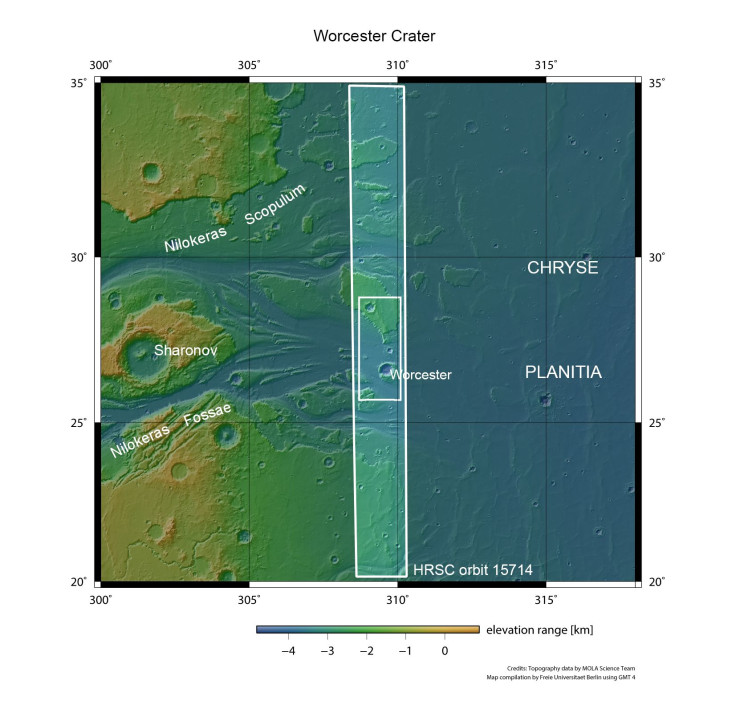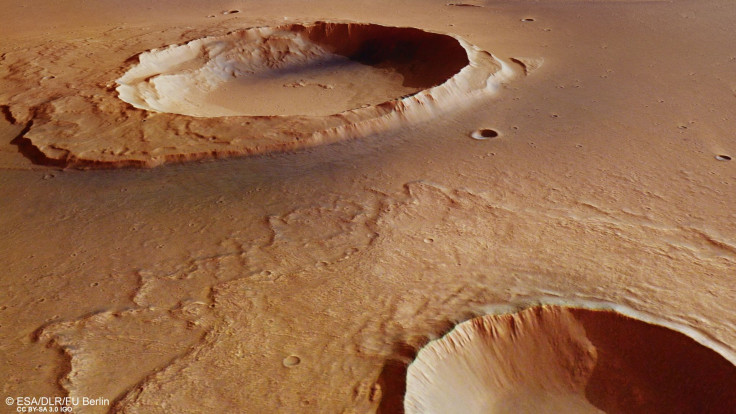Mars News: ESA's Mars Express Reveals Remnants Of Ancient 'Mega-Flood'; NASA's MAVEN Shifts Course To Avoid Phobos Collision

The planet Mars is now a dry, cold and dusty place, but it wasn't always so. In recent years, a series of observations made using NASA and European Space Agency (ESA) orbiters has revealed that even long after the solar wind had stripped Mars of its atmosphere, turning it into the cold, arid world it is today, lakes of water and probably even oceans still existed on the surface of the planet.
On Thursday, the ESA released fresh images of the Martian surface captured by the Mars Express orbiter. The images showed Kasei Valles — a nearly 2,000-mile channel system, possibly created by flowing water roughly 3.6 billion to 3.4 billion years ago — in unprecedented detail.
"A combination of volcanism, tectonics, collapse and subsidence in the Tharsis region led to several massive groundwater releases from Echus Chasma, which subsequently flooded the Kasei Valles region," the ESA said in a statement accompanying the images. "These ancient mega-floods have left their mark on the features seen today."

The Echus Chasma is a roughly 60-mile incision that lies just north of the Valles Marineris canyon system. Previous observations have revealed the presence of clay in the region, and scientists believe that it was once one of the largest — if not the largest — water sources on the planet.
In addition to capturing photographs of the channel system, Mars Express, which has been orbiting the red planet for over 13 years now, snapped images of several topographical features in Kasei Valles, including a 15-mile wide impact crater named Worcester.

"While much of the blanket of material surrounding the crater – which was originally thrown out from inside the crater during the impact – has been eroded, the section downstream of the flood has survived," the ESA said. "Over time this has led to the overall appearance of a streamlined island, with its stepped topography downstream perhaps suggesting variations in water levels or different flood episodes."
In other Mars-related news, NASA announced Thursday that its Mars Atmosphere and Volatile EvolutioN (MAVEN) orbiter had been forced to make an unscheduled maneuver to avoid a collision with the Martian moon Phobos in the near future. The spacecraft, which has been orbiting the red planet for just over two years, carried out a rocket motor burn Tuesday to boost its velocity by about 0.4 meters per second.
MAVEN's elliptical orbit crosses those of other spacecraft and Phobos — which circles at an altitude of roughly 6,000 miles from Mars' surface — many times over the course of a year.
"This is the first collision avoidance maneuver that the MAVEN spacecraft has performed at Mars to steer clear of Phobos. The orbits of both MAVEN and Phobos are known well enough that this timing difference ensures that they will not collide," NASA said in a statement. "Although a small correction, it was enough that -- projected to one week later when the collision would otherwise have occurred -- MAVEN would miss the lumpy, crater-filled moon by about 2.5 minutes."
© Copyright IBTimes 2024. All rights reserved.






















